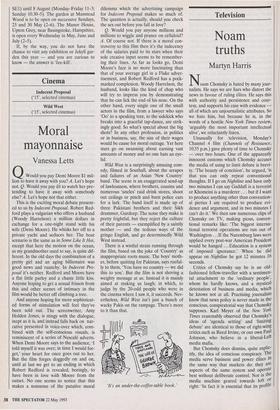Gardens
The genius of Miss Jekyll
Ursula Buchan
There are few surer, if more arcane, pointers to a gardener's know-how than the way he or she pronounces Gertrude Jekyll's surname. To hear it articulated wrongly sets the teeth on edge, like the sound of fingernails scraping a blackboard. This is not entirely stuffy pedantry, but a measure of the esteem in which Miss Jekyll (she is usually accorded the title even now, when first names are common property) is held, for to mispronounce her name seems somehow to diminish her. We can, I am sure, look forward to a year of irritation, as celebrations begin to mark the 150th anniversary of her birth. Classic FM, for example, seems to have the same difficulty over her surname — but with less excuse — as with the names of Central European composers.
Born into a cultured upper-middle-class family, Miss Jekyll spent most of her life in very rural Surrey. She was a competent artist, exhibiting at the Royal Academy at the age of 23, and a highly skilled crafts- man in wood, silver and textiles. She knew John Ruskin and Hercules Brabazon Brabazon, and was a keen adherent of the Arts and Crafts movement. Gardening and garden design, which made her famous in her lifetime, did not become her major pre- occupations until after her eyesight deteri- orated seriously in the 1880s. The most famous description of her is some gush from the pen of Lady Emily Lyt- ton (who became the wife of Edwin Lutyens), which makes her sound like a kindly mole in a children's story:
She is the most enchanting person and lives in the most fascinating cottage you ever saw. Mr Lutyens calls her Bumps, and it is a very good name. She is fat and stumpy, dresses
'We had a referendum and decided that you'll join Europe.'
rather like a man, little tiny eyes, very nearly blind, and big spectacles. She is simply fasci- nating.
This was some years after the first meet- ing of young architect and middle-aged garden designer in 1889, which was to result in a most fruitful collaboration designing houses and gardens to match. These included the building of Munstead Wood, near Godalming, in which Miss Jekyll lived and gardened until her death in 1932, at the age of 89. But garden design constituted only a part of her prodigious output, which also included many contribu- tions to gardening magazines and newspa- pers and 11 books, of which the best-known are Wood and Garden and Colour Schemes for the Flower Garden.
Her importance to latter-day gardeners lies in her ability to translate, readably and memorably, artistic notions about colour and its use into garden planting. She raised garden planning to a three-dimensional art, using plants for their shape, form and structure as well. Although she did not invent the herbaceous border (as she is often credited with doing), she was its most successful exponent. Planting in colour groupings and drifts, 'dropping in' plants to fill gaps, the use of 'architectural' full-stop plants and of foliage: these are some of the hallmarks of the Jekyll garden. She man- aged to grapple with the infuriatingly elu- sive qualities of plants and, without them losing their individual qualities, to mould them into a scheme which was more than the sum of the parts.
No one could ever accuse gardeners of not having due regard to their roots. Her disciples have been loyal and influential: through Graham Stuart Thomas and Vita Sackville-West, her influence can be felt in many National Trust gardens today. More- over, garden writers like Penelope Hob- house have proved that it is perfectly possible to scale down her effects and make them applicable to smaller gardens. It is likely that, whether you are aware of it or not, you pursue Jekyllesque ideas in your garden.
In the last ten years, facsimile reprints of her books have been published, and her writings appear in many anthologies. There is more than one extant biography. Last year, Richard Bisgrove did us all a great service by publishing The Gardens of Gertrude Jekyll (Frances Lincoln, £20); this reproduces, intelligibly, 47 of Miss Jekyll's 2,000 extant garden plans, interpreted for a modern readership.
In places, brave souls have been success- ful in restoring Jekyll's gardens, using the original plans, now in the library of the University of California, Berkeley. The most famous is Hestercombe, overlooking the Taunton Vale, but there are other notable ones, such as the Manor House, Upton Grey.
And now there is a major exhibition of her work in many fields at the Museum of Garden History (Lambeth Palace Road, SE1) until 8 August (Monday–Friday 11-3; Sunday 10.30-5). The garden at Munstead Wood is to be open on successive Sundays, 23 and 30 May (2-6). The Manor House, Upton Grey, near Basingstoke, Hampshire, is open every Wednesday in May, June and July (2-5).
If, by the way, you do not have the chance to visit any exhibition or Jekyll gar- den this year — and you are curious to know — the answer is lee-kill'.



















































 Previous page
Previous page